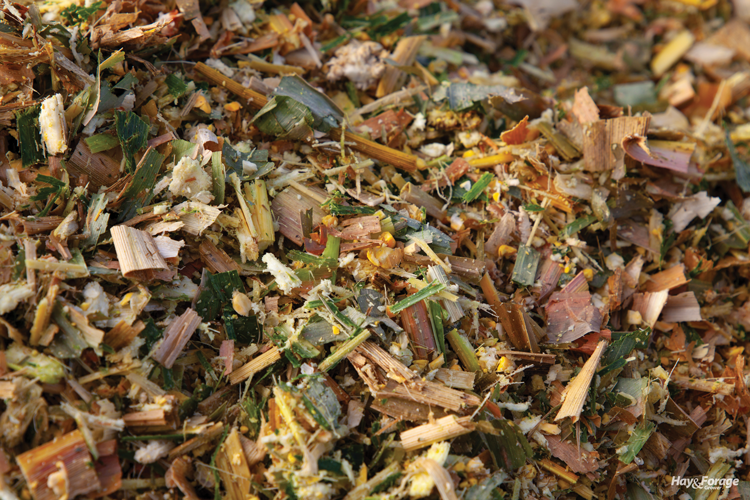The author works for Rock River Lab Inc., the University of Wisconsin-Madison, and is a consultant with Cows Agree Consulting LLC.

As my kids approach their teenage years, I’ve realized my ability to influence their habits from a fatherly perspective needs to evolve. During their toddler years and into grade school, telling them “no” generally meant their request or demand wasn’t going to happen. As they’re getting older — and wiser — they’re learning how to subvert my “no” response and achieve whatever it is that they want.
My wife is skilled and experienced in early childhood development and education, so I’m learning how to be a great dad from her as our kids grow up. I think I’m at the point where I need to pivot from being a disciplinarian to a bit more of a leader and coach in parenting. I don’t mean that I’m going to let up as a dad, but I can see myself channeling my energy into a coach-like approach where I aim to steer my kids in their thoughts, words, and actions. We’ll lean into our faith as well, praying for direction as we look to His guidance to steer us on our path.
As we turn this discussion around to forage, the point here is to lean into a steering mindset. With forage, we cannot dictate the phenotypic outcome at the end of the harvest season. Factors outside of our control influence the crop. Mother Nature exerts her incredible will and affects crop yield and quality. Crop disease or insect pressure may also impact the crop beyond our control. Even so, we can steer and influence the crop, much like I can steer and influence my kids. There are levers we can pull before and during the growing season to positively affect forage quality and fiber digestibility.
Consider the following options to move the needle forward with fiber digestibility in hay, haylage, and corn silage crops — at least on a relative basis within the season. Ultimately, the growing environment will push the entire crop higher or lower in quality.
Seed genetics: Genetic and phenotypic outcomes are those due to either genetics or genetics plus the environment. The amount that genetics influence fiber digestibility ranges; however, I remember Joe Lauer showing me some genetic reliability data from the University of Wisconsin corn hybrid evaluation program detailing that neutral detergent fiber digestibility (NDFD) is quite heritable.
Lauer showed that high-ranking corn hybrids came out on top in terms of fiber digestibility more times than not, relative to other hybrids when grown in different years or locations. Take this mindset to the field as you choose your hybrids for corn silage, and ensure fiber digestibility is included within your hybrid selection index.
Soil fertility: While I still struggle to understand the exact relationship between soil fertility and forage fiber digestibility, I’m a firm believer that substandard fertility will equate to less healthy and vigorous plants. Both macronutrients and trace minerals play a role. Green and healthy tissue in plants will contain more digestible fiber than dying or necrotic tissue.
With the 2024 Midwestern growing season as a case study, nitrogen likely moved out of the root zone with excessive rainfall early in the year. The result was that some fields ran out of nitrogen as the season progressed. Plant health and livelihood suffered, and that likely contributed to substandard fiber digestibility.
Crop protection: While fertility plays a role in plant health, crop protection is also quite important. Genetics influence disease resistance; however, I’m a proponent for additional crop protection practices to ensure plants are healthy right up to cutting and harvest. Talk through crop protection options with your agronomist this year to improve fiber digestibility.
Harvest timing and maturity: Alfalfa quality decline is a bit more forgiving than that of cool-season grasses as maturity advances; however, the fiber digestibility of both types of forage is tightly correlated to plant maturity. Alfalfa fiber digestibility will gradually move downward as plants bud and flower, whereas cool-season grass fiber digestibility falls off a cliff as the plants transition from vegetative to reproductive stages.
With corn, a warm-season grass, the decline in fiber digestibility around R5 and silage maturity is a bit less pronounced than cool-season grasses or alfalfa. With that said, corn will drop 3 to 5 units in fiber digestibility as it progresses through the silage maturity stage.
Theoretical cut length: Particle size interacts with forage nutritive value, which I discussed in the January issue of Hay & Forage Grower. The interaction between theoretical length (TLC) and total-tract fiber digestibility in dairy or beef cattle diets is tricky because particle size also influences how fast the feed moves through the cow’s digestive tract.
Shortening up the TLC can expose more surface area in forage for fiber digesting bacterial attachment. The bacteria need to attach before digestion starts, so in some cases with challenged forage, a shortened TLC can help tip the scales toward slightly improved NDFD.
Forage preservation: The best prepped forage can fall apart if not preserved effectively. Heat damage in hay or ensiled forage can tie fiber and protein together, creating a less digestible product. Poor preservation can also contribute to antinutritional contaminants such as mold, yeast, or undesirable bacteria. Experience tells me that these antinutritional contaminants will affect the rumen’s sensitive fiber digesting bacteria and depress fiber digestibility in cows.
By leading with a steering philosophy, higher fiber digestibility can be achieved by considering the management areas covered here. While the year-end forage outcome may be wild like my kids, trust that we can make an impact.
This article appeared in the March 2025 issue of Hay & Forage Grower on page 10.
Not a subscriber?Click to get the print magazine.
